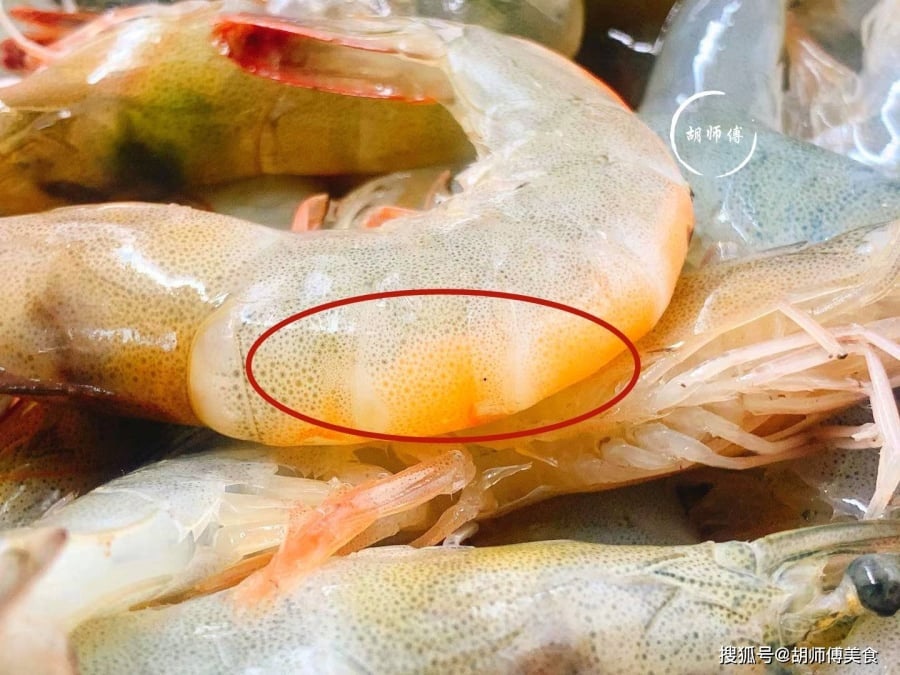When buying shrimp, many people are uncertain whether to pick “straight shrimp” or “curved shrimp.” These two types of shrimp actually have notable differences.
The distinction between “straight shrimp” and “curved shrimp” is significant. Without knowing how to choose, you might end up with frozen, dead shrimp, which have lower meat quality, a strong fishy odor that can’t be masked, and a poor overall taste and texture.

When shopping for shrimp at a supermarket or market, it’s best to opt for curved shrimp. Here’s why: when shrimp die, their muscles relax, causing them to stay straight even if twisted.
Conversely, live shrimp naturally curl when exposed to low temperatures. So, when freshly processed or chilled, live shrimp maintain a curved shape.
In addition to checking for curvature, there are three other signs to look for to avoid shrimp that have been stored for too long.

Beware of these two types of shrimp when buying:
Type 1: Shrimp missing heads or tails
Inspect their heads and tails. Shrimp with missing heads or tails are likely old. The heads of such shrimp tend to rot and become mushy, which affects the taste and quality of the meat. After cooking, they’ll have a strong fishy taste and won’t be as fresh as newly-caught shrimp.

Type 2: Shrimp with red shells
Some shrimp may have shells that turn red due to high temperatures during transportation. Red-shelled shrimp often indicate that they have aged, and the meat of these shrimp won’t retain its good flavor. When selecting shrimp, opt for those with clean shells and no signs of discoloration.

Type 3: Shrimp with overly soft meat
If the shrimp meat is mushy and lacks elasticity, it may indicate that the tail has begun to decay. Such shrimp will have a softer texture and stronger odor, and the heads and tails may separate easily. When cooked, they’ll emit an unpleasant fishy smell. To ensure freshness, avoid this type.
Proper cooking technique is also important for shrimp. When boiling shrimp, use boiling water and add Sichuan peppercorns, ginger, and beer. These ingredients help eliminate fishy odors. For optimal freshness, consume shrimp on the same day they’re cooked, as prolonged storage can make the meat dry and lose its flavor.
Always choose curved shrimp, as they are generally fresher. No matter how you cook them, curved shrimp will deliver the softest and freshest taste.

